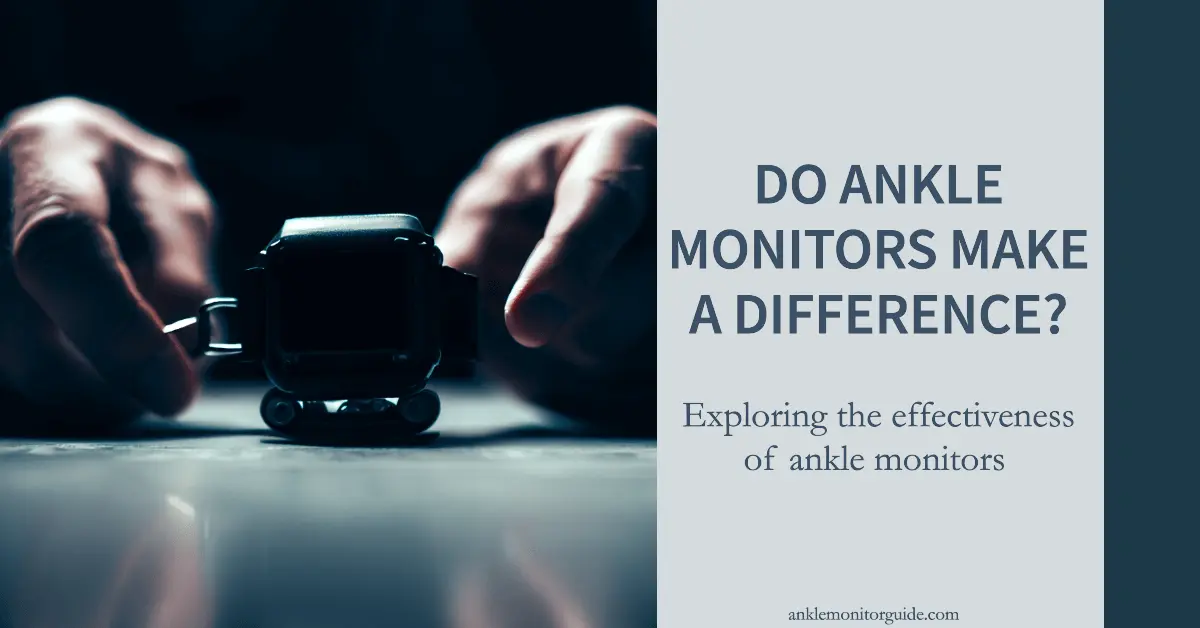While successful crime reduction applications have helped ankle monitors gain notable attention, they remain complex contraptions mired in myths. These monitoring devices have, over time, garnered their fair share of misconceptions.
But why do these misconceptions persist, and what’s the truth behind them? In this in-depth exploration, we will debunk five of the most common misconceptions about ankle monitors, proving that with proper knowledge, most misconceptions can be easily dismissed. The tighter our grip on truth, the more accurate our cognizance of safety and justice technology will become.
Myth 1: Ankle Monitors Are Solely for Criminals
It’s time to debunk the first myth. While ankle monitors are indeed used within the criminal justice system for purposes like pre-trial supervision and parole, they have a much broader scope. Beyond monitoring criminal offenders, ankle monitors find application in immigration cases, tracking individuals under house confinement, and even in wildlife conservation efforts.
Other than that, they’re also used for elderly people prone to wander due to dementia or Alzheimer’s, to ensure the safety of victims of domestic violence, and to enforce restraining orders. The use of ankle monitors extends far beyond law enforcement, with applications expanding every year.
Myth 2: Ankle Monitors Can Be Easily Removed
Another myth that revolves around the misconception is that ankle monitors can be casually detached. In reality, these devices are equipped with sophisticated tamper-resistant features. Any unauthorized attempt to remove or tamper with the device triggers immediate alerts to monitoring authorities.
Modern ankle monitors are designed to withstand tampering and endure normal wear and tear, making them incredibly challenging to remove without detection. Instances of failed escape attempts due to tamper alarms serve as real-world examples debunking this myth.
Myth 3: Ankle Monitors Track Your Every Move
The concept of constant location tracking is overstated. Yes, ankle monitors do track location – but their tracking mechanisms vary. Some devices use GPS for live tracking, while others use Radio Frequency (RF) technology to alert if the wearer leaves or enters a designated area.
Monitoring tends to align with the specifics of the person wearing the device, and monitoring centers establish specific schedules for location checks. For instance, someone on house arrest might undergo more frequent tracking, while others may have fewer check-ins. Real-time tracking isn’t a continuous process.
Working Mechanism of Ankle Monitors
To truly grasp this concept, let’s briefly delve into how ankle monitors function:
- GPS technology provides precise location data.
- RF signals transmit data to monitoring centers.
- Monitoring centers analyze and store data at predetermined intervals.
Myth 4: Ankle Monitors Infringe Upon Privacy
There’s another common myth that posits that ankle monitors are an invasion of privacy. While it’s true that ankle monitors collect data, it’s recorded in compliance with laws and regulations, ensuring rights are respected. The collected data typically only includes location information, not private conversations or activities.
In reality, ankle monitors operate under strict legal regulations that protect individual privacy. While they monitor physical location, they do not infringe upon other facets of daily life.
Balancing Accountability and Rights
It’s crucial to understand that the legal system meticulously maintains a balance between accountability and individual rights. Ankle monitors represent a measured intervention aimed at safeguarding public safety while upholding personal privacy. The myth that they inherently violate privacy is a misconception that deserves clarification.
Myth 5: Ankle Monitors Are Inherently Uncomfortable
Ankle monitors are commonly misunderstood because of their comfort factor. Initially, wearers might experience discomfort – a common experience with foreign objects. However, the reality is that ankle monitors have evolved to prioritize wearer comfort. Modern devices are designed to be as unobtrusive as possible, allowing individuals to choose from various sizes and styles to find a comfortable fit.
Furthermore, simple tips, such as wearing a light sock under the device, can significantly enhance comfort. Stories of individuals adapting to wearing these devices showcase that, with time, most find ways to comfortably live with ankle monitors.
Tips for Enhanced Comfort
Here are some practical tips to make an ankle monitor more comfortable:
- Select the appropriate size and style.
- Maintain cleanliness and dryness around the device.
- Position it slightly above the ankle bone.
- Communicate openly with your monitoring authority if discomfort arises.
Final Thoughts: Demystifying Ankle Monitors
The world of ankle monitors is riddled with misconceptions. However, understanding the truth about these devices is crucial to forming a more accurate perspective. Ankle monitors serve diverse purposes and are equipped with advanced technology to ensure effectiveness and reliability. By dispelling these misconceptions about ankle monitors, we hope to contribute to a more informed and balanced perception of ankle monitors and their role in our society.







